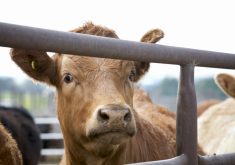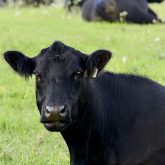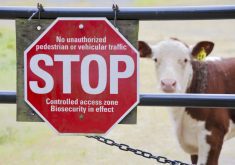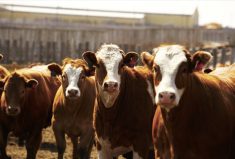Two positive tests for porcine diseases in the province have experts reminding Alberta producers to enhance their biosecurity.
A PCR test found porcine epidemic diarrhea virus (PEDv) in the office at a pig-handling facility — the first time the virus has been found in Alberta. A second test, also at a pig-handling facility, detected a related but less deadly virus — swine delta coronavirus.
“This has been a warning for everyone to increase the biosecurity, especially with truckers who may have been to positive sites before, and then they bring their truck to pick up pigs,” said Julia Keenliside, veterinary epidemiologist with Alberta Agriculture and Rural Development, during an Alberta Pork telephone town hall in late October.
Read Also

Mosquito-borne virus could be devastating to sheep breeding operations
Cache Valley virus, a mosquito-borne disease that infects small ruminants, could be a devastating hit to small operations.
The PCR (short for polymerase chain reaction) test detects a specific protein in the virus, but doesn’t indicate whether the virus is alive and capable of causing an infection.
“The virus can be dead, but the test does indicate that the virus was once there,” said Keenliside. “I’d be a lot more concerned if I was pulling viruses out of a couple of different sites where there was manure. In any situation where things are moist, the virus will survive much longer than on a dry, clean office floor.”
But the tests show producers simply can’t let down their guard, Keenliside said in an interview.
“Producers should be considering all of these sites to be potentially positive at any time. Even if there are negative surveillance results, because of the nature of pig traffic and truck movement, they could be contaminated again at any moment.”

A positive result leads to an increase in cleaning and bio-security at the facility, as well as stringent additional testing. The environmental surveillance project team, which is surveying seven sites with high pig traffic, work with any operation that records a positive test.
The facility where the virus was found voluntarily stopped movement of pigs. The government is not issuing mandatory shutdowns of pig movement, nor is it identifying sites where PEDv or swine delta coronavirus is found.
The positive test for swine delta coronavirus on Oct. 9, resulted in the removal of all the pigs at the handling facility. Further testing was conducted at the end of the month, but results weren’t available at press time.
In provinces where PEDv has been more prevalent, producers with strong biosecurity measures have been able to keep the virus out of their farms even when it is present in assembly yards in their area.
“This is not a superbug and basic biosecurity, consistently applied, can keep it off the farm,” said Keenliside. “If there is a positive in the assembly yard, it doesn’t mean it has to go back to your farm. It’s your responsibility to make sure it doesn’t. There’s no need for panic — just up your biosecurity.”
Winter’s onset also requires more vigilance as both PEDv and swine delta coronavirus flourish in colder, moist conditions, or in areas with a humidity level of more than 50 per cent.
Producers should be rereading biosecurity training material, and reviewing their procedures, said Dr. Egan Brockhoff, veterinarian with Prairie Swine Health Services and lead on the environmental surveillance project.
“Sit down with your team members and your staff and work through those details. How are we getting into the barns? How are we crossing those high-traffic areas? And are we keeping our front entrances clean?”
Producers also need to work with everyone in the system, especially truckers, the officials said. Producers have the right to refuse access to anyone who wants to come on their property who is not following protocols, said Frank Marshall, veterinarian with Marshall Health Services. He also advised producers not to fall victim to snake oil salesmen, selling “magic disinfectant waters” guaranteed to get rid of PEDv.
Traceability is another critical tool and it’s important that everyone continue to work with Alberta Pork to have their PigTrace program implemented, said Brockhoff.
“Having that traceability information makes it so easy to contact producers who might be at risk and might have been exposed,” he said. “We can find out who to call, and who to call quickly to let them know.”
PigTrace isn’t just about a producer protecting their herd, it’s about producers protecting their neighbours’ and friends’ herds, he said.
PEDv continues to spread worldwide. Asia and the U.S. have both been hit very hard, with the total number of cases south of the border now over the 8,700 mark. Canada has reported about 70 cases. Unlike the U.S., Canada is also in the process of creating regional control plans, thanks to Canadian Swine Health Intelligence and the Canadian Pork Council.
“We have some success stories going on across Canada and something we can all be proud of,” said Brockhoff.
Some sites in Ontario have successfully eliminated the virus, and the relatively low number of cases shows the Canadian system is working, said Marshall.
“The Canadian industry should have a pat on the back for that,” he said.
















